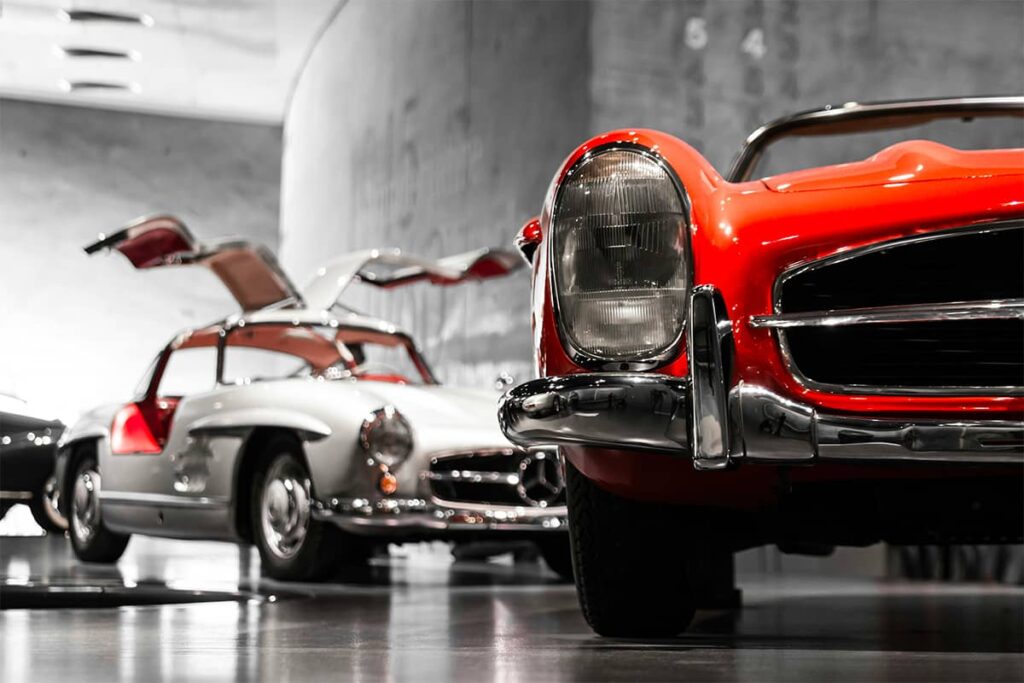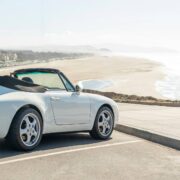Cabriolet vs Coupe – Open-Air Freedom or Practical Performance

For decades, auto enthusiasts have deliberated one of driving’s greatest dilemmas: cabriolet or coupe? Behind this debate lies a choice between the wind-in-your-hair freedom of open-top motoring and the curvaceous, performance-focused cocpit of a closed coupe. With sunny summer road trips on the horizon, you may find yourself torn between these two sporty contenders.
In this post, we’ll highlight the origins and key distinctions between cabriolets and coupes across a range of factors – from design aesthetics and sensory experiences to performance metrics, practicality, and ownership considerations.
Key Takeaways So Far
Cabriolets deliver open-air thrills yet compromise performance, practicality and affordability versus coupes. They suit fair-weather drivers wanting a sensory feast over athletic handling.
Coupes lack convertible freedom but boast better efficiency, chassis rigidity, proportions and value. They suit all-weather drivers wanting a balanced, focused performance machine.
For sun-loving freedom seekers, cabriolets justify costs through total immersion in the driving environment. Athletic all-weather coupe pilots willingly trade open-top exhilaration for mechanical focus. Which camp do you fall into?
Understanding the Basics
The Origin and Evolution of Cabriolets and Coupes
Convertible bodystyles first emerged in the early 20th century as open-top roadsters based on horse carriages. These primitive soft-tops offered thrill-seeking motorists of the day open-air motoring before evolving into the sophisticated retractable tops we know today.
| Cabriolet | Coupe | |
| Origins | Early 20th century open-top roadsters | Late 19th century horseless carriages with passenger compartments |
| Etymology | French word for “exposed to the air” | French term for “cut” referring to carriage with cut-back rear seats |
| Early Examples | 1940 Ford Deluxe Convertible | 1955 Mercedes-Benz 300SL Gullwing |
Key Differences Between a Cabriolet and a Coupe
While cabriolets and coupes share sporty DNA and even overlap in some models, they diverge in several meaningful ways:
- Roof design: The main distinction lies in the roof – cabriolets have retractable soft tops while coupes have fixed rigid roofs.
- Passenger capacity: Most coupes are strictly 2-door, 2-seater vehicles while cabriolets add rear seats in a 2+2 configuration.
- Driving experience: With open-air freedom comes compromised chassis rigidity, increased noise, and added weight in cabriolets versus coupes.
- Climate adaptability: Retractable soft tops make cabrio fair-weather vehicles while coupes allow year-round daily driving.
Delving into the Details
Analyzing cabriolets and coupes on a deeper level requires comparing factors like pricing, design, performance, fuel efficiency, and ownership experience.
Price Comparison: Cabriolet vs Coupe
Open-top driving commands a pricing premium compared to an equivalent closed-top car due to the increased mechanical complexity required for retractable roof systems and convertible-specific structural reinforcements.
| Cabriolet | Coupe | |
| Base Price Range | From $30,000 | From $25,000 |
| Average Price Difference vs Equivalent Coupe | +$6,000 | -$8,000 |
| Depreciation | Higher depreciation due to added mechanical complexity, and vulnerability to elements | Lower depreciation thanks to metal roof |
Takeaway: Cabriolets require a larger upfront investment and steeper long-term depreciation versus coupes.
Fuel efficiency
When it comes to fuel efficiency, cabriolets are at an inherent disadvantage compared to coupes. The added weight and aerodynamic drag of a convertible top causes most cabriolets to achieve EPA ratings averaging 2-8 mpg lower than their coupe counterparts, resulting in more frequent filling of the gas tank.
Handling and performance
As for the handling and performance, the extra weight and chassis flex of soft-top cabriolets put them at a disadvantage versus rigid coupes(in most cases). While cabriolets must incorporate structural reinforcements to account for the absent roof, coupes benefit from tightly constructed monocoque bodies and integrated frames that allow for precise suspension tuning.
Still Can’t Decide Which One is Better? – Targa is the Answer
A targa is a semi-convertible car body style that offers some of the advantages of both a coupe and a convertible. In a targa, there is a removable roof section over the front seats that can be stored in the rear of the vehicle, while the area over the rear seats remains fixed.

This provides more openness and better outward visibility than a standard a car with a fixed roof, allowing increased airflow and an open-air experience that coupe owners don’t get. However, the permanently fixed rear roof section also makes a targa more weatherproof and practical than a regular convertible.
For these reasons, the targa style appeals to drivers who desire some convertible qualities but require slightly more security, versatility, and year-round usability. The targa represents a flexible compromise for those who want the styling, performance, and personalization of a sports car but don’t want to choose strictly between coupe and convertible body configurations.
Popular examples of targa top cars
- Porsche 911 Targa – One of the most well-known targa models is the Porsche 911 Targa. Porsche pioneered the targa concept starting with the 911 Targa in 1965. Modern 911 Targa models continue offering the iconic 911 design with the openness of a targa roof that employs a special sliding mechanism.
- Chevrolet Corvette – Recent model year Corvettes like the C6 and C7 have offered a removable targa-style roof as an alternative to the coupe or standard convertible. The Corvette’s targa roof panel conveniently stores in the rear trunk compartment.
Expert Opinion
As a convertible driver for over a decade, I can’t imagine life without that top-down freedom! While coupes boast sexy silhouettes, nothing compares to finding a curvy backroad on a summer night with the open roof. My long-term ownership has taught me the key is finding the right cabriolet for your climate, budget and priorities. If you’ve got the means, splurge for a hardtop convertible in cold regions or keep an extra garage queen. Compromised trunk space and backseats are worth the payoff of infinite headroom on demand.
Conclusion
The cabriolet versus coupe debate ultimately comes down to weather, priorities and personality. While coupes boast all-weather capabilities, cabriolets promise endless blue-sky exhilaration for those not afraid to compromise. If the freedom of top-down driving sparks your soul, be ready for added costs and complexities.
FAQ
The main differences come down to the roof design and driving experience. Cabriolets have retractable soft tops for open-air driving while coupes have fixed rigid roofs. The open design of cabriolets compromises structural rigidity, adds noise, and increases weight compared to more performance-focused coupes.
Cabriolets almost always come at a pricing premium over two-door versions. On average, a new cabriolet costs $6,000-$8,000 more than an equivalent model with metal top. This added cost is largely due to the mechanical complexity of retractable roofs and extra chassis reinforcements.
Due to their lighter weight and more aerodynamic shape, coupes achieve better EPA fuel economy ratings than cabriolets on average. Expect a 2-8 mpg advantage over similar cabriolets. This translates into lower fuel costs and improved driving range.
Coupes are better daily drivers year-round thanks to their sealed passenger cabins. Most modern two-doors come with comprehensive climate control systems for comfortable use in all seasons. Cabriolets serve best as fair weather vehicles in warmer climates unless fitted with a hardtop.
In-house writer and editor at CabrioNation. I've been a lifelong fan of convertibles ever since my first car, a well-worn Bimmer convertible that I learned to maintain from the ground up. Since then I've owned many soft and hard top models, becoming an experienced DIY mechanic and care taker. I also run a small repair shop and rental service in Montpellier, where I get to share the wind-in-your-hair feeling with customers while also helping fellow cabrio enthusiasts on maintenance and top repairs.



As a longtime Miata owner, I agree cabriolets come with compromises but the thrill can’t be matched! The handling tradeoffs are worth it